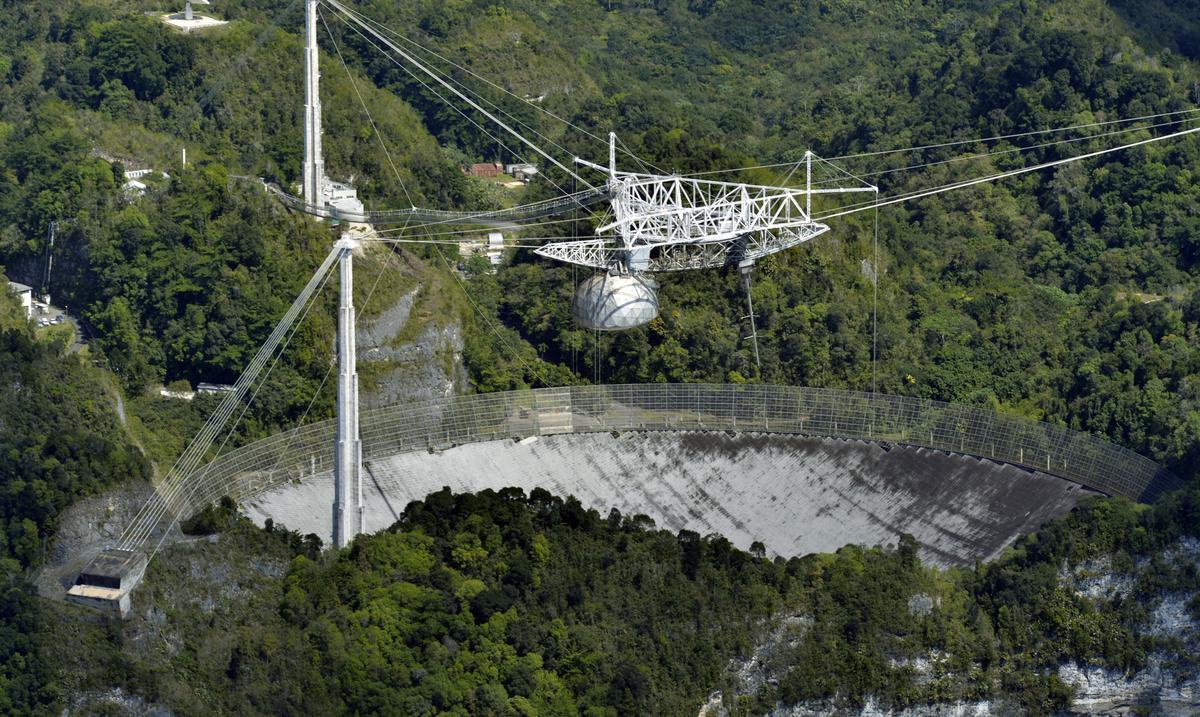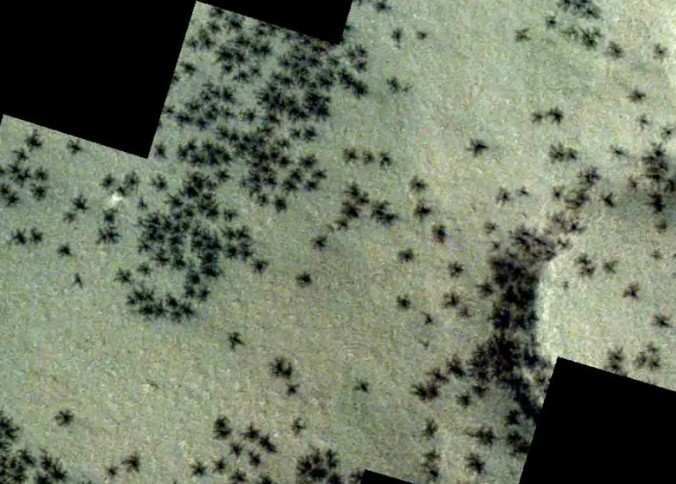Less than 10 weeks after the collapse of the radio telescope two years ago Arecibo ObservatoryThe National Science Foundation (NSF, in English) –Owner of Laboratory– Decided not to rebuild the historic structureScientific research icon.
Doctor Carlos PatinHead of education component in the facilities, said New day NSF justifies its commitment by changing the focus of the work in the laboratory so that it is academic in nature. In this way, research and scientific work takes a back seat.
“They have a major focus on science Education should give you the main focus. Science will continue to be done, but not with the research approach that a radio telescope provides. The importance of the laboratory is secondary to the research and educational component. Now it’s going to be a core academic component and a secondary investigative component,” said Ana G. Batin, who is also assistant vice president of intelligence and compliance at Mendez University, explained.
The media requested statements from the NSF about its decision, and the organization limited itself in a brief response, saying it “intends to keep the site open for educational purposes and more.”
The observatory’s decision not to restore the radio telescope was not the only change, and in addition, NSF notified both Ana G. Méndez University and the University of Central Florida (UCF, in English). Yang Enterprises, work with the academic work at the center – which, for the time being, From September 30, 2023 the facility will no longer be part of the administration.
“University of Central Florida and Ana G. They told us that this group, where the University of Mendes is now working, is our contract until September 2023, and then the expectation is that the applicants will start managing Arecibo. October 2023″, he maintained.
said The agency will launch a “call for proposals” for institutions to explain how they will address NSF’s new vision and what material or subjects they will take up next year in October..
“It (call for proposals) is mandatory every five years. “These types of facilities – by law – require people to be invited to man the monitoring centre,” Bhatin said.
Ana G. Méndez University has been selected for two consecutive cycles, for which they have been participating in educational work at the Arecibo Observatory Science and Visitors Center for more than ten years.
In principle, the “shift in focus” announced by NSF this morning is not new, as it must be implemented precisely in the logistics category. Science and Visitor Center It was reopened on December 1, 2020 after the collapse of the radio telescope.
The academic work at the center and efforts to continue science without major equipment were intended to prevent the facility’s doors from closing entirely, and the work of the lab will continue to be relevant.
A The short description is published on its portal With a call for proposals, the NSF indicated The Arecibo Laboratory, as it was originally known, will be renamed the Arecibo Center for STEM Education and Research (ACSER).. The acronym STEM is defined by the Institute as “Science, Technology, Engineering and Mathematics Education and Research”.
“The National Science Foundation (NSF) on October 13 invited proposals for the creation of a new world-class multidisciplinary education center at the Arecibo Laboratory in Puerto Rico, which will serve as a center for education. The spread of STEM fields (Science, Technology, Engineering and Mathematics)”, sent to this media. The organization said in written statements.
“The center aims to expand the existing educational opportunities at the Arecibo laboratory, while at the same time implementing new STEM programs and initiatives. The new center will open its doors in 2023,” he added.
The NSF confirmed to this newspaper that the call for proposals to manage the education center did not include restoration of the radio telescope, although it recognized that the instrument served as an economic, cultural and scientific resource for Puerto Rico. , has been supported by the scientific community throughout its nearly 60-year history.
“That needs to be clarified The request for proposals does not include the renovation of the 305-meter telescope or operational support for existing science infrastructure such as the 12-meter radio telescope or lidar facility.. Groups and/or researchers who wish to utilize existing scientific infrastructure or propose new projects that would complement the activities of the new academic center may submit proposals,” noted the NSF.
Asked if they would like to resubmit their collaboration proposal, the doctor replied that they would review the NSF proposal to determine if it was consistent with the organization’s mission in science and education.
“An academic center needs research. So, without first-class research at that university center, it would be difficult to continue the work we’re doing. We understand that if we stay, we need to strengthen the academic component, but we are looking for funding to promote first-class research at the centre,” he said.
He also confirmed it The determination of the NSF was made without prior consultation with the collaborating universities in the laboratory.
“The owner of the facility is the National Science Foundation and they have not discussed the decision with us. […] At least a direct conversation with us before taking a decision, no,” he pointed out.
Estimates from the local and international astronomy community indicated that the reconstruction of the Arecibo radio telescope would cost at least $400 million and take five to 10 years.
After the instrument’s collapse, NSF insisted it did not have enough funds to rebuild it, but it is still evaluating the feasibility of implementing a plan that would allow the radar to be rebuilt more up-to-date and robust. Technology.
The Arecibo radio telescope—the world’s largest—consisted of a 1,000-foot-wide reflecting dish and a 900-ton Gregorian dome, or instrument platform, suspended 450 feet above the ground.
NSF’s determination not to rebuild the radio telescope appears to end more than a decade of its attempts to close the observatory.
For example, since 2006, NSF has shown its first intention to shut down a radio telescope. By 2016 he tried again but failed due to public pressure. The reason for the forced closure by the foundation is the radio telescope’s expensive budget, which is $12 million a year.
The Arecibo Observatory has served as a global resource and specialty for radio astronomy, planetary, solar system and geological research for the past 57 years.
If it had been operational, the radio telescope would have been a fundamental part of the experimental mission’s development, Patin confirmed. An asteroid deflection (DART) is operated by the National Aeronautics and Space Administration (NASA).
“Not having an important and globally recognized research center like the Arecibo Laboratory is a loss to Puerto Rico’s economy”He pointed out.
“Disappointment” Jennifer Gonzalez
Hours after the announcement, the Citizenship Commissioner in Washington, Jennifer GonzalezHe said he was “disappointed” by NSF’s decision, but vowed to advocate for the science and education facility.
“While we understand the titanic challenge of building a new radio telescope that surpasses the expectations of the previous 305-meter telescope, we are disappointed that NSF failed to immediately address this possibility in its new plans. I will continue to support the observatory in these next steps and maximize the use of this facility with all of its instruments, as well as the legacy radio telescope. I would also argue for possible reconstruction.expressed in written statements to the press.
The U.S. House of Representatives approved a bill in early February that included language recognizing the scientific contributions of the old Arecibo radio telescope and recommending its replacement at the same site with newer technologies.



:quality(85)/cloudfront-us-east-1.images.arcpublishing.com/infobae/SMPW7M5BQFERBOQUPJXKCOKARY.jpg)
:quality(85)/cloudfront-us-east-1.images.arcpublishing.com/infobae/NP5NEZXMZFGNLBHNEQJHPJVMKM.jpg)
